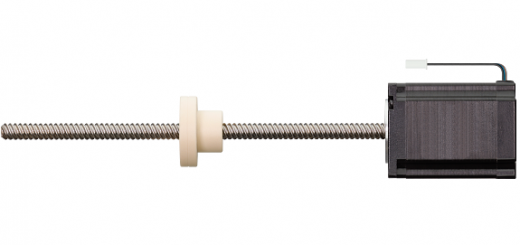How Do Plastic Bearings Work?
By Shizu Yamaguchi
Introduction
What do you think of when you hear the word plastic? Cheap water bottles, maybe? Ripped plastic grocery bags? If so, you’re not alone. But what some people don’t realize is that not all plastics are cheap and flimsy. They’ve come a long way in the last 50 years, with some plastics now being robust, highly durable and hygienic. They can even be used as components inside your application and offer more advantages than metal.
In this blog post, I’ll talk more about plastic components (specifically bearings), explain how they work, and show you how a plastic part could be a lifesaver for your next application. Let’s jump in.
Wear plastics not spacers
There are two different types of plastic bearings: wear-resistant and spacers.
Wear-resistant plastic bearings are designed to be used in applications that move, whereas spacers are meant to be static. Spacers are made with cheap, common plastics and will not be included in our discussion here.
What are our bearings made of?
Our plastic bearings are composed of three different components. First is the base polymer which provides the backbone and structure. Second are fibers and filaments which add strength and increase load resistance. Third are the solid lubricants included to reduce friction and provide dry lubrication to the bearing. The three components are optimized for wear and abrasion resistance. Our bearings are manufactured by compounding the three components, creating a homogeneous mixture which is consistent throughout the part.
What are the advantages of this composition?
The optimization of base polymers, fibers and filaments in our wear plastics create a bearing that is strong, self-lubricating and high resistant to wear. Using different combinations of materials, our bearing can cover applications ranging from millions of cycle of a piston guide on a pneumatic cylinder to withstanding multiple tons of pressure of a front end loader.
In addition, the compounding and blending means that as long as there is material present, the bearing will still provide a self-lubricating wear surface. This even distribution decreases the likelihood of catastrophic failure. In contrast, a PTFE-lined bearing, once the lubricant layer is worn away, can experience bearing failure due to metal on metal contact.
Are there any other advantages to using plastic?
There are a number of advantages to using plastic bearings over metal bearings or hybrid bearings. These include:
- FDA-compliant
- Cleanliness that is ideal for laboratory, food or washdown environments
- Low noise
- Grease-free, therefore eliminating the requirement for dirty grease guns or maintenance
- Chemical-resistant
- Cost-effective
- Resistant to dust and dirt
- Corrosion-resistant
- Good edge load resistance
How does the start up phase of these bearings work?
When the system first starts moving, the bearing deposits bits of solid lubricant from its inner diameter into the shaft, filling in the shaft roughness with its material. There is an initial spike in friction between the shaft and plastic bearing. However, the shaft will smooth out due to the deposits and gradually, the amount of friction between the shaft and the bearing down-regulates.
Conclusion
So, there you have it. We have covered a few important topics on the subject of plastic bearings, including composition, advantages and start up phase.
Next steps
Igus completes over 15,000 tests on wear plastic products per year and have been doing so over many decades. These results are all integrated into online tools, allowing engineers to input as few as five application variables to find out the service life of their bearings. We offer free samples for potential clients so they can test out products prior to purchase. Please reach out at 1-800-965-2496 to speak with one of our technical sale representatives.



